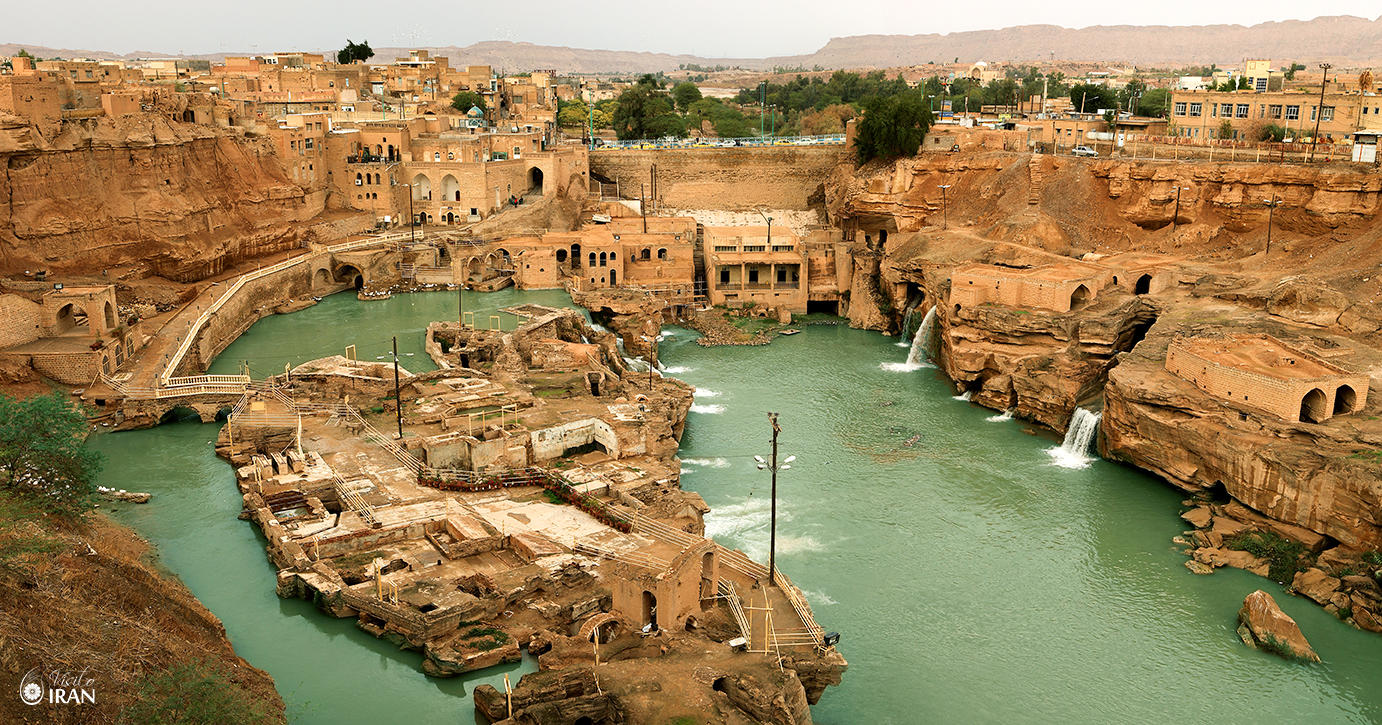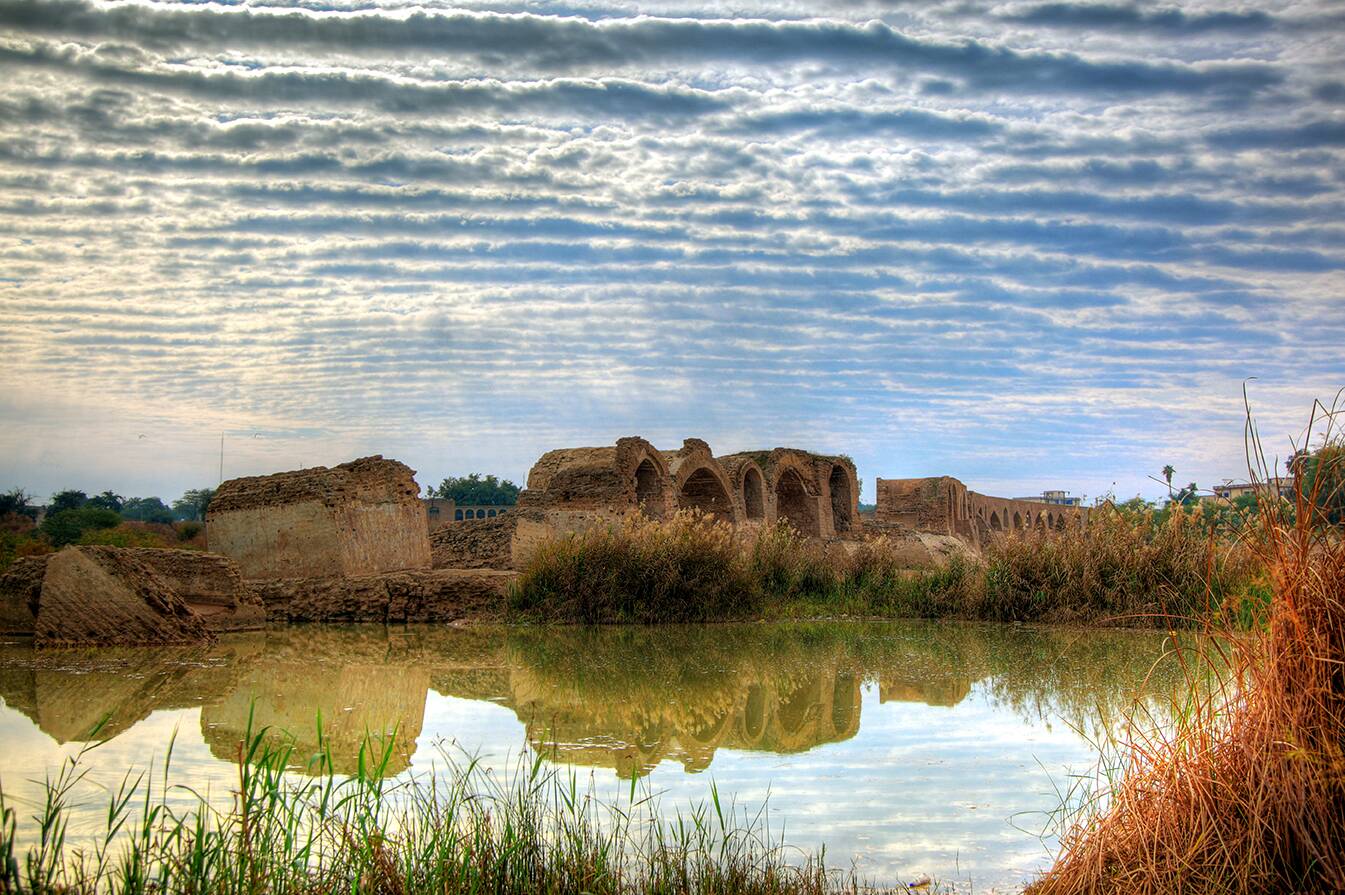Can you tell me where the most significant industrial complex in the world was before the industrial revolution?
Khuzestan is home to a unique collection of water structures in Shushtar city. Due to its importance, antiquity, and individual use as the oldest water and industrial system globally, it has been inscribed on the World Heritage List by UNESCO.
The Shushtar Historical Hydraulic System is one of the most incredible places you will ever see. You can join the Iran Travel Guide Center on this historic trip to Shushtar city and check out the Shushtar Historical Hydraulic System if you’re interested in seeing one of the most significant engineering structures of the ancient world.
Shushtar Historical Hydraulic System Introduction
From the writings of historians and tourists of the past, it appears that the water structures of Shushtar date back 4,000 years to pre-Achaemenid times Shushtar Historical Hydraulic System reached its peak of development; however, during the periods of the Achaemenids and Sassanids.
In reality, the Shushtar city Collection of Water Structures consists of 14 different structures, all of which have been submitted to UNESCO and registered in the World Heritage List under the name Shushtar Historical Hydraulic System.
Different Parts of the Shushtar Historical Hydraulic System
The water mills
Whenever the Gargar Dam is blocked, the water level rises and fills up the three tunnels dug in the rock, then the water in these tunnels divides into many channels and goes to the part of the dam where the water mills are.
Finally, the water from the mills overflows into the waterfall lakes, creating an eye-catching sight.
Mizan Dam or Band-e-Mizan
Low water levels required them to raise the water level to irrigate agricultural lands, so they built a dam on the river to block water flow.
Kolah-Farangi Tower
The Kolah-Farangi is a tower near the river built during the Qajar era. The purpose of this tower was to monitor workers and the amount and intensity of water in the river.

Canal Gargar
This canal is located in the north of Shushtar city. It is interesting to know that this canal was built manually during the Achaemenid period to reduce the volume of Karun water for the city’s security.
Borj Ayar Bridge-Dam and Sabein Sanctuary
At the bottom of the waterfalls is this dam that dates back to the time of the Sassanids. Khoda-Afrain Bridge-Dam, Salasel Castle, Dariun Canal, Sharabdar Dam, Lashkar Bridge-Dam, Band-e Khak Dam, and the wine dam are other unique parts of Shushtar water structures.
The industrial and commercial complex of the Shushtar Historical Hydraulic System is of such significance that many of the world’s leading archaeological universities have faculty units dedicated to ancient hydro structures adjacent to the complex. In addition, at least one million foreign tourists visit Shushtar each year to see the complex.
Where to stay on a trip to Shushtar Historical Hydraulic System?
It is good to know that if you decide to stay in Shushtar, there are several accommodation centres in this city where you can spend the night and enjoy watching the water structures at night. Some of these places include:
- Traditional Hotel Khaneh Tabib: Imam Crossroads – Paveh Alley
- Sarabi Shushtar Traditional Hotel: Abdullah Banu Street, behind the tomb of Abdullah Banu
- Gargar Hotel: Islamic Azad University Boulevard – inside the campus
- Afzal Traditional Residence: Imam Crossroads – Paving Alley – Afzal Alley
Attractions around Shushtar City
- Salasel Castle: 1.2 km away
- Shushtar Grand Mosque: 1.5 km away
- Mostofi Historical House: 1.4 km away
- Marashi Historical House: 1 km away
Complex Working Hours
Although some of these attractions, including the complex of mills and waterfalls, are illuminated and can be viewed at night, they do not have the same splendour as during the day. A visit to the Historical Hydraulic System of Shushtar during the day is the only way to enjoy its beauty and architectural details.

The Shushtar Complex is also open from 7 a.m. to 8 p.m. The complex will be closed from 1 to 5 p.m. on hot summer days.
Due to the holiday and the mild climate of Shushtar city, more people visit the area during the Nowruz (March) holiday. Therefore, you may encounter many visitors to the Shushtar complex of water structures. The Shushtar Hydraulic System is open almost all year round to tourists.
However, Shushtar’s collection will be closed for six days of the year, an official mourning holiday. The lunar calendar determines the official mourning holidays; since they are in circulation, they can only be determined by referring to the calendar for that year.




No comment